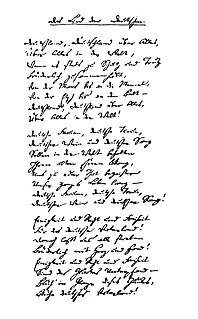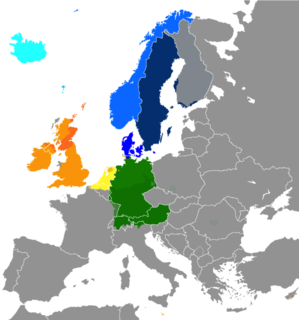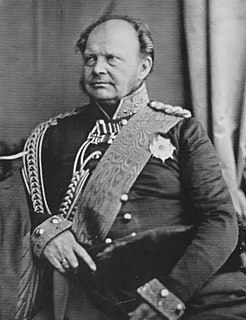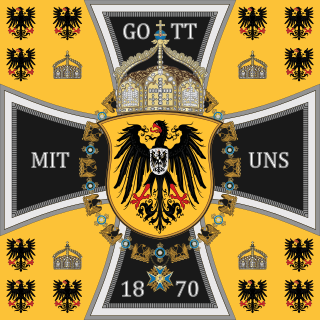
The "Deutschlandlied", officially titled "Das Lied der Deutschen", or part of it, has been the national anthem of Germany since 1922. In East Germany, the national anthem was "Auferstanden aus Ruinen" between 1949 and 1990.

Hamburg, officially the Free and Hanseatic City of Hamburg, is the second-largest city in Germany after Berlin and 7th largest city in the European Union with a population of over 1.84 million. Hamburg's urban area has a population of around 2.5 million and its metropolitan area is home to more than five million people. The city lies on the River Elbe and two of its tributaries, the River Alster and the River Bille. One of Germany's 16 federated states, Hamburg is surrounded by Schleswig-Holstein to the north and Lower Saxony to the south.

Szczecin is the capital and largest city of the West Pomeranian Voivodeship in northwestern Poland. Located near the Baltic Sea and the German border, it is a major seaport and Poland's seventh-largest city. As of December 2019, the population was 401,907.

The Brothers Grimm, Jacob Ludwig Karl Grimm (1785–1863) and Wilhelm Carl Grimm (1786–1859), were Hessian academics, philologists, cultural researchers, lexicographers and authors who together collected and published folklore during the 19th century. They were among the first and best-known collectors of German and European folk tales, and popularized traditional oral tale types such as "Cinderella", "The Frog Prince", "The Goose-Girl", "Hansel and Gretel", "Rapunzel", "Little Red Riding Hood", "The Wolf and the Seven Young Goats", "Rumpelstiltskin", "Sleeping Beauty", and "Snow White". Their classic collection, Children's and Household Tales, was published in two volumes—the first in 1812 and the second in 1815.

Braunschweig or Brunswick, is a city in Lower Saxony, Germany, north of the Harz Mountains at the farthest navigable point of the Oker River, which connects it to the North Sea via the Aller and Weser Rivers. In 2016, it had a population of 250,704.

During the later stages of World War II and the post-war period, Germans and Volksdeutsche fled or were expelled from various Eastern and Central European countries, including Czechoslovakia, and the former German provinces of Silesia, Pomerania, and East Prussia, which were annexed by Poland and the Soviet Union. In 1957, Walter Schlesinger discussed reasons for these actions, which reversed the effects of German eastward colonization and expansion: he concluded, "it was a devastating result of twelve years of National Socialist Eastern Policy." The idea to expel the Germans from the annexed territories was proposed by Winston Churchill, in conjunction with the Polish and Czechoslovak exile governments in London at least since 1942. In late 1944 the Czechoslovak exile government pressed the Allies to espouse the principle of German population transfers. On the other hand, Polish prime minister Tomasz Arciszewski, in an interview for The Sunday Times on 17 December 1944, supported the annexation of Warmia-Masuria, Opole Regency, north-east parts of Lower Silesia, and parts of Pomerania, but he opposed the idea of expulsion. He wanted to naturalize the Germans as Polish citizens and to assimilate them.

William I or Wilhelm I of the House of Hohenzollern was King of Prussia and Kaiser of Germany from 2 January 1861, and became the first German Constitutional Monarch on 18 January 1871. Wilhelm I was the first head of state of a united Germany, and was also de facto head of state of Prussia from 1858 to 1861, serving as regent for his brother, Frederick William IV.

The West Germanic languages constitute the largest of the three branches of the Germanic family of languages.

The 26 cantons of Switzerland are the member states of the Swiss Confederation. The nucleus of the Swiss Confederacy in the form of the first three confederate allies used to be referred to as the Waldstätte. Two important periods in the development of the Old Swiss Confederacy are summarized by the terms Acht Orte and Dreizehn Orte.

Saxe-Coburg and Gotha, or Saxe-Coburg-Gotha, was an Ernestine, Thuringian duchy ruled by a branch of the House of Wettin, consisting of territories in the present-day states of Thuringia and Bavaria in Germany. It lasted from 1826 to 1918. In November 1918, Charles Edward, Duke of Saxe-Coburg and Gotha, was forced to abdicate. In 1920, the northern part of the duchy was merged with six other Thuringian free states to form the state of Thuringia: Saxe-Weimar-Eisenach, Saxe-Altenburg and Saxe-Meiningen, Schwarzburg-Rudolstadt and Schwarzburg-Sondershausen, as well as the People's State of Reuss. The southern part of the duchy, as southernmost of the Thuringian states, was the only one which, after a referendum, became part of Bavaria.

Frederick William IV, the eldest son and successor of Frederick William III of Prussia, reigned as King of Prussia from 7 June 1840 to his death. Also referred to as the "romanticist on the throne", he is best remembered for the many buildings he had constructed in Berlin and Potsdam, as well as for the completion of the Gothic Cologne Cathedral.

Verein für Leibesübungen Bochum 1848 Fußballgemeinschaft, commonly referred to as simply VfL Bochum[faʊ̯ ʔɛf ˈʔɛl ˈboːxʊm], is a German association football club based in the city of Bochum, North Rhine-Westphalia. The club has spent 34 seasons in the Bundesliga.

Grimms' Fairy Tales, originally known as the Children's and Household Tales, is a German collection of fairy tales by the Grimm brothers or "Brothers Grimm", Jacob and Wilhelm, first published on 20 December 1812. The first edition contained 86 stories, and by the seventh edition in 1857, had 210 unique fairy tales.
Sturm und Drang was a proto-Romantic movement in German literature and music that occurred between the late 1760s and early 1780s. Within the movement, individual subjectivity and, in particular, extremes of emotion were given free expression in reaction to the perceived constraints of rationalism imposed by the Enlightenment and associated aesthetic movements. The period is named for Friedrich Maximilian Klinger's play of the same name, which was first performed by Abel Seyler's famed theatrical company in 1777.

Kurt Aland was a German theologian and biblical scholar who specialized in New Testament textual criticism. He founded the Institut für neutestamentliche Textforschung in Münster and served as its first director from 1959 to 1983. He was one of the principal editors of Nestle-Aland – Novum Testamentum Graece for the Deutsche Bibelgesellschaft and The Greek New Testament for the United Bible Societies.

The Imperial German Army was the unified ground and air force of the German Empire. The term Deutsches Heer is also used for the modern German Army, the land component of the Bundeswehr. The German Army was formed after the unification of Germany under Prussian leadership in 1871 and dissolved in 1919, after the defeat of the German Empire in World War I.

The German Olympic Sports Confederation was founded on 20 May 2006 by a merger of the Deutscher Sportbund (DSB), and the Nationales Olympisches Komitee für Deutschland (NOK) which dates back to 1895, the year it was founded and recognized as NOC by the IOC.

RasenBallsport Leipzig e.V., commonly known as RB Leipzig or informally as Red Bull Leipzig, is a German professional football club based in Leipzig, Saxony. The club was founded in 2009 by the initiative of the company Red Bull GmbH, which purchased the playing rights of fifth-tier side SSV Markranstädt with the intent of advancing the new club to the top-flight Bundesliga within eight years. The men's professional football club is run by the spin-off organization RasenBallsport Leipzig GmbH. RB Leipzig plays its home matches at the Red Bull Arena.
The 2020–21 2. Bundesliga is the 47th season of the 2. Bundesliga. It began on 18 September 2020 and is scheduled to conclude on 23 May 2021. The season was originally scheduled to begin on 31 July 2020 and conclude on 16 May 2021, though this was delayed due to postponement of the previous season as a result of the COVID-19 pandemic.





















